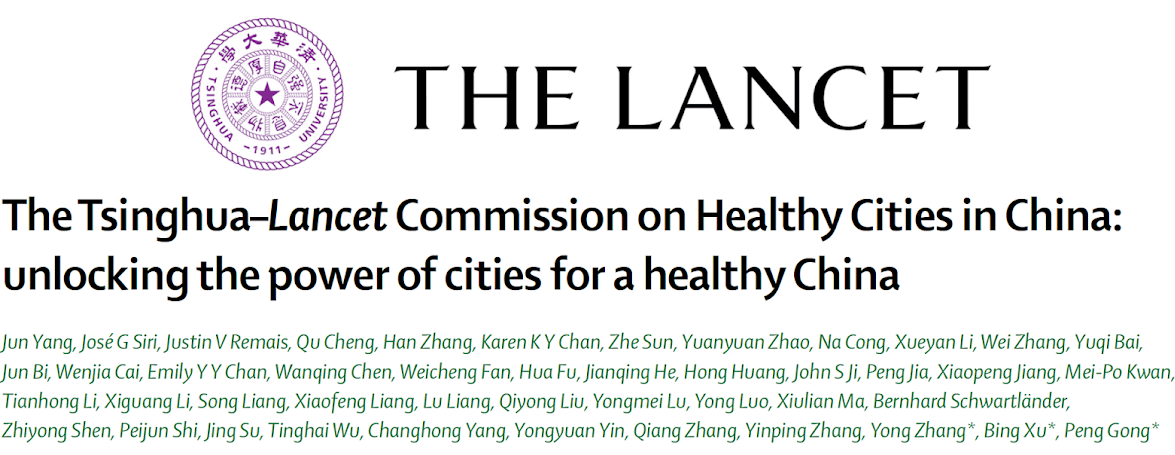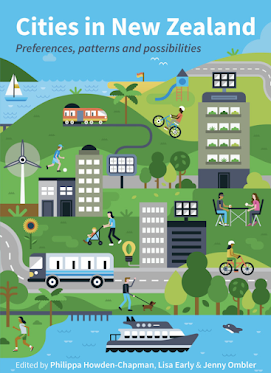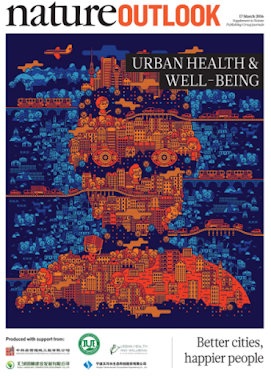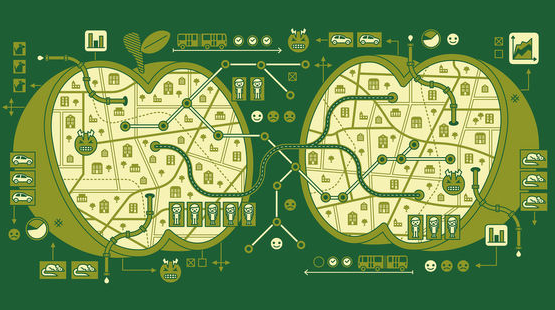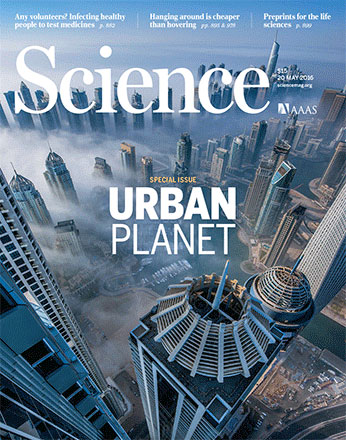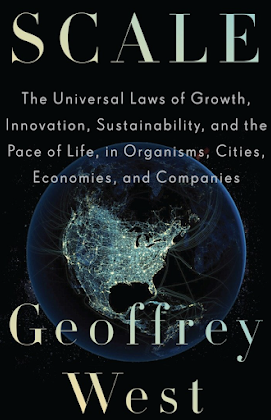
"...scaling implies that if a city is twice the size of another city in the same country (whether 40,000 vs. 20,000 or 4 million vs. 2 million), then its wages, wealth, number of patents, AIDS cases, violent crime, and educational institutions all increase by approximately the same degree (by about 15 percent above mere doubling), with similar savings in all of its infrastructure. The bigger the city, the more the average individual systematically owns, produces, and consumes, whether goods, resources, or ideas. The good, the bad, and the ugly are integrated in an approximately predictable package: a person may move to a bigger city drawn by more innovation, a greater sense of “action,” and higher wages, but she can also expect to confront an equivalent increase in the prevalence of crime and disease.”
Integrate health into all policies. China should take advantage of new, human-centred urbanisation strategies. For example, cities should integrate health into urban planning and design as a first step towards the integration of health into all policies.
Increase participation. Cities should increase participation by residents, the private sector, non-governmental organisations (NGOs), and community groups in health management. This increase can be achieved through investment in community capacity building and engagement with the private sector.
Promote intersectoral action. To motivate and sustain intersectoral action in the design, building, and management of healthy cities, cities should develop ways to assess the health effects of urban management by use of measures that span multiple and diverse sectors.
Set local goals for 2030 and assess progress periodically. Cities should view the health goals specified in the Healthy China 2030 plan as long-term goals that are achieved through the building of healthy cities. Indicator systems should be put in place to assess progress and inform the public.
Enhance research and education on healthy cities. To develop new theories and practical solutions, cities should increase investment and form partnerships with universities, research institutes, and the private sector to support research and education on the best ways to create healthy cities.
Franz W. Gatzweiler, Stefan Reis, Yi Zhang & Saroj Jayasinghe (2018): Lessons from complexity science for urban health and well-being, Cities & Health, DOI: 10.1080/23748834.2018.1448551
Abstract
From a complexity science perspective, urban health and well-being challenges emerge due to the complexity of urban systems. Adverse urban health outcomes emerge from failing to respond to that complexity by taking a systems approach in knowledge and action which would open opportunity spaces for human agents to create benefits which in turn would generate salutogenic health and well-being outcomes. Lessons learned from complexity science suggest that adverse urban health outcomes emerge from a poor understanding of their complexity and from not engaging with them in a transdisciplinary, integrated fashion. A conceptual framework is presented which combines systems models from the natural and social sciences and explains how opportunities for advancing health and well-being can be co-created. The framework demonstrates that taking a systems approach is a necessary cognitive response from learning the lessons of complexity science and from understanding that humans are an inextricable part of the systems they aim at understanding and managing. Such response is at the core of systems intelligence. The implications are far reaching for the science of urban health and well-being.
Keywords: Complexity, urban health, risk, systems intelligence
Cities in New Zealand: Preferences, Patterns & Possibilities
Edited by Philippa Howden-Chapman, Lisa Early & Jenny Ombler
This book outlines the latest thinking about the preferences people have for their urban life, the patterns of urban development in Aotearoa, and the possibilities for our cities in the future. It takes a systems view, where all the components that make up the city are interlinked, so that a decision to change one aspect of the urban fabric can also affect other parts of the city system. Where we choose to build new houses and apartments affects housing and transport costs, access of the residents to social amenities, opportunities to increase healthy modes of transport such as walking and cycling, the amount of air pollution, and many other factors.
Cite as: Howden-Chapman, P., Early, L., & Ombler, J. (Eds.). (2017). Cities in New Zealand: Preferences, patterns and possibilities. Wellington, New Zealand: Steele Roberts Aotearoa
Roderick J Lawrence, Franz W Gatzweiler
Journal of Urban Health (2017) 94: 592–596
Making sense of empirical knowledge requires a new transdisciplinary knowledge domain created by a commitment to convergence between researchers in multiple academic disciplines and other actors and institutions in cities. Disciplinary-based researchers are no longer the sole producers of empirical knowledge. Today, diverse kinds of knowledge are becoming an emergent product of multiple societal stakeholders acting collectively to address challenges that impact on their habitat, their livelihood, and their health. Insights from complexity science also require a fundamental rethinking of the role and responsibility of human agency while admitting rather than denying complexity and radical uncertainty
Xuemei Bai et al.
Current Opinion in Environmental Sustainability, Volume 23, December 2016, Pages 69-78
A systems approach is urgently needed in urban research and policy analysis, but such an approach rarely features in current analysis or urban decision-making for various reasons. This paper explores four questions: why a systems approach is necessary, what defines such an approach, why has this rarely been adopted in practice, and what can be done to promote its use.
Montira J Pongsiri, Franz W Gatzweiler, Andrea M Bassi, Andy Haines, Fanny Demassieux
The Lancet Planetary Health, Vol. 1, No. 7, e257–e259, October 2017
A systems approach for planetary health involves understanding that human health outcomes emerge from complex interactions between natural and social systems and that stakeholder engagement is necessary in the coproduction of this knowledge.
Harry Rutter et al. 2017
To date, the evidence underpinning responses to these challenges has largely been generated by tools and methods that were developed to answer questions about the effectiveness of clinical interventions, and as such are grounded in linear models of cause and effect. Identification, implementation, and evaluation of effective responses to major public health challenges require a wider set of approaches and a focus on complex systems.
Marta Olazabal, Aline Chiabai, Sébastien Foudi, Marc B. Neumann
Abstract
Decision-making for climate change adaptation requires an integrated and cross-sectoral approach to adequately capture the complexity of interconnected systems. More meaningful decisions can be taken in an arena where different agents provide knowledge of specific domains. This paper uses a semi-quantitative method based on cognitive mapping to demonstrate how new knowledge emerges when combining knowledge from diverse agents. For the case of heatwaves in the city of Madrid (Spain) we elicit knowledge about climatic impacts across urban sectors and potential adaptation options. Knowledge is elicited in individual interviews and then aggregated using fuzzy cognitive maps. We observe that the individual maps vary considerably in size and structure and find evidence of diverse and even contradictory perceptions. There is no “super-stakeholder”, who theoretically could provide full knowledge about mechanisms operating in this urban system: the maximum percentage of the final aggregated map explained by a single individual is 26% in terms of concepts and 13% in terms of connections. We illustrate how the emergence of new knowledge can be sustained by combining scientific and policy expertise. Our approach supports knowledge co-production and allows to account for the interconnectedness of urban sectors under climatic impacts in view of formulating more robust adaptation strategies.
The world is in the midst of the largest wave of urban growth in history. With more than half the population already living in cities, and further rises expected, the health of city dwellers is crucial to global well-being.
Throughout history, many of the innovations designed to improve city living have instead posed a challenge to having a healthy, happy life. Urban environments designed around the car, for instance, promote a sedentary lifestyle.
Richard Hodson, Nature 531, S49 (16 March 2016)
Stephanie Pain, Nature 531, S50–S51 (16 March 2016)
Sarah DeWeerdt, Nature 531, S52–S53 (16 March 2016)
James M. Gaines, Nature 531, S54–S55 (16 March 2016)
Natasha Gilbert, Nature 531, S56–S57 (16 March 2016)
Stress: The privilege of health
Amy Maxmen, Nature 531, S58–S59 (16 March 2016)
Perspective: City farming needs monitoring
Andrew A. Meharg, Nature 531, S60 (16 March 2016)
Disease: Poverty and pathogens
Michael Eisenstein, Nature 531, S61–S63 (16 March 2016)
Kevin Pollock
Nature 531, S64–S66 (16 March 2016)
Cities are complex environments. Planning interventions that borrow principles from theoretical physics could help to improve peoples' lives.
Subject terms: Society Complexity Theoretical physics
Ana V. Diez Roux
Am J Public Health. 2011 September; 101(9): 1627–1634
Complex systems approaches have received increasing attention in public health because reductionist approaches yield limited insights in the context of dynamic systems.




